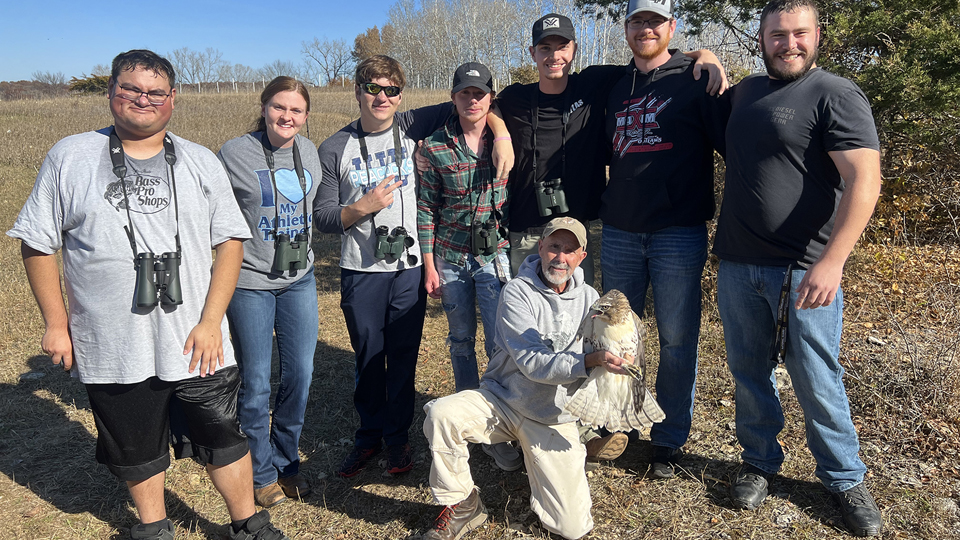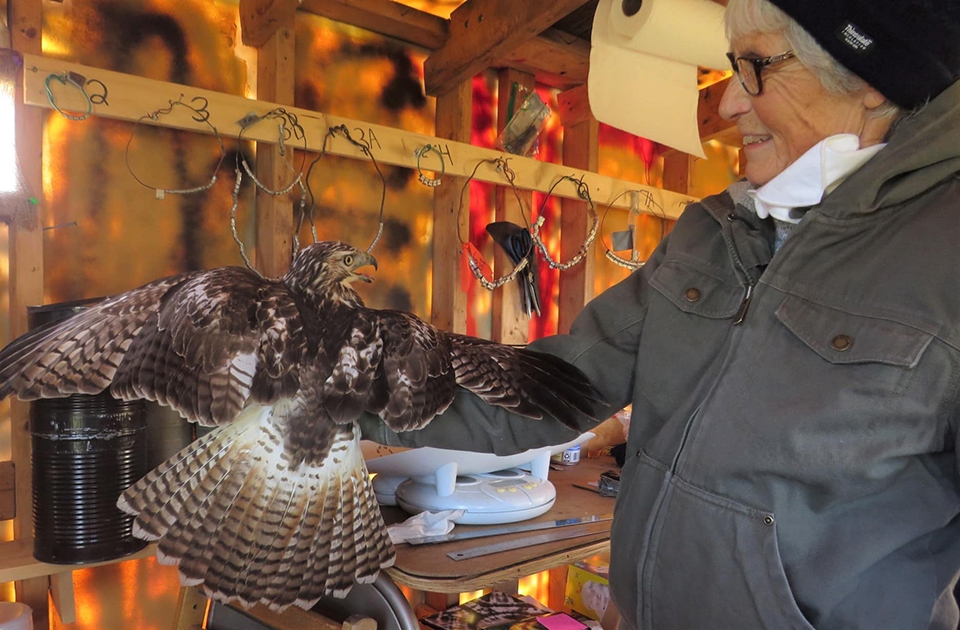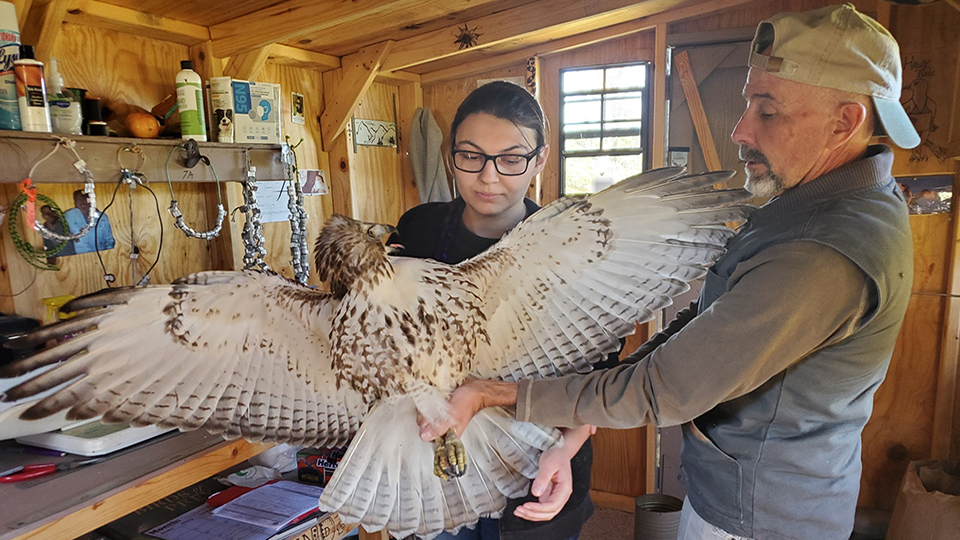The awe never really goes away,” says Mary McTeague ’22. “Whenever I handle a hawk, I’m struck by both their beauty and their strength.” Brynn Olsen ’23, an environmental studies major, agrees. “You’re holding a wild raptor—it never gets old.”
 Dave Kester with Luther students at the banding station on Hawk Hill in Decorah.
Dave Kester with Luther students at the banding station on Hawk Hill in Decorah.
Luther College students like Olsen work with the Raptor Resource Project to band migrating raptors, growing our body of knowledge about how these birds live and move in a changing world. McTeague
and Olsen are two of six Luther interns employed by RRP each year to help trap and band raptors as they migrate south. Their work contributes to a larger body of knowledge that tracks bird populations, dispersal, migration, health, life history, and survival rates.
Luther has partnered with RRP since 2017. The Hawk Hill station, funded through RRP and a grant from the Iowa Department of Natural Resources, is situated in the northwest corner of campus on
a hilltop prairie peppered with stands of cedar and aspen. In its six years of operation, interns at the station have banded hundreds of birds and shared the splendor of live raptors with just as many area
students. Luther classes and homeschooled children regularly visit the blind, and Kester will often take a live hawk from the station down to campus to show Luther bio students or to Decorah schools
like John Cline Elementary. In this way, the Hawk Hill station acts as an incubator for future bird conservationists, whose early encounters with these wild animals will hopefully breed a lifelong interest.
 RRP banding station. Kathy Carlyle is holding a juvenile Red-tailed hawk. It will molt into adult plumage (including the red tail) at the beginning of its second year.
RRP banding station. Kathy Carlyle is holding a juvenile Red-tailed hawk. It will molt into adult plumage (including the red tail) at the beginning of its second year.
In the Western Hemisphere, researchers from Canada to South America work together to understand bird populations, and one way they do this is through banding—carefully trapping wild birds, recording information about them, then attaching a metal band with a unique serial number around their legs. In the US, these bands are issued by the United States Geological Survey (USGS). When a banded bird is recaptured or found dead or injured, the USGS and the researchers who applied the band are informed.
The setup at the Hawk Hill station typically includes three nets and multiple lures to attract raptors. Kester
trains interns on how to work the traps, collect hawks from the nets, and take a variety of measurements from weight to wing chord to tail length, all in a way that is safe for both bird and handler. The interns choose a band and fit it around the raptor’s leg. Under that band’s unique serial number, interns record the data they measured and release the bird. With only about 2,000 master banders in the US, Luther students are lucky to have access to local experts like Kester and Jon Stravers and the mentorship they offer. Olsen, who hopes to work in raptor research longer-term, says, “It’s nice to have people behind me who know areas that I might be able to go into. I’ve been very fortunate to work with Dave and Jon—they’ve taught me a lot.”
 Dave Kester, station master at our Decorah hawk banding station, teaches a student intern how to safely handle a juvenile Red-tailed Hawk. Correct handling of a bird ensures that neither the hawk nor the handler gets hurt!
Dave Kester, station master at our Decorah hawk banding station, teaches a student intern how to safely handle a juvenile Red-tailed Hawk. Correct handling of a bird ensures that neither the hawk nor the handler gets hurt!
Look for more on our banding station and our interns in the weeks to come!
 The Raptor Resource Project
The Raptor Resource Project The Raptor Resource Project
The Raptor Resource Project